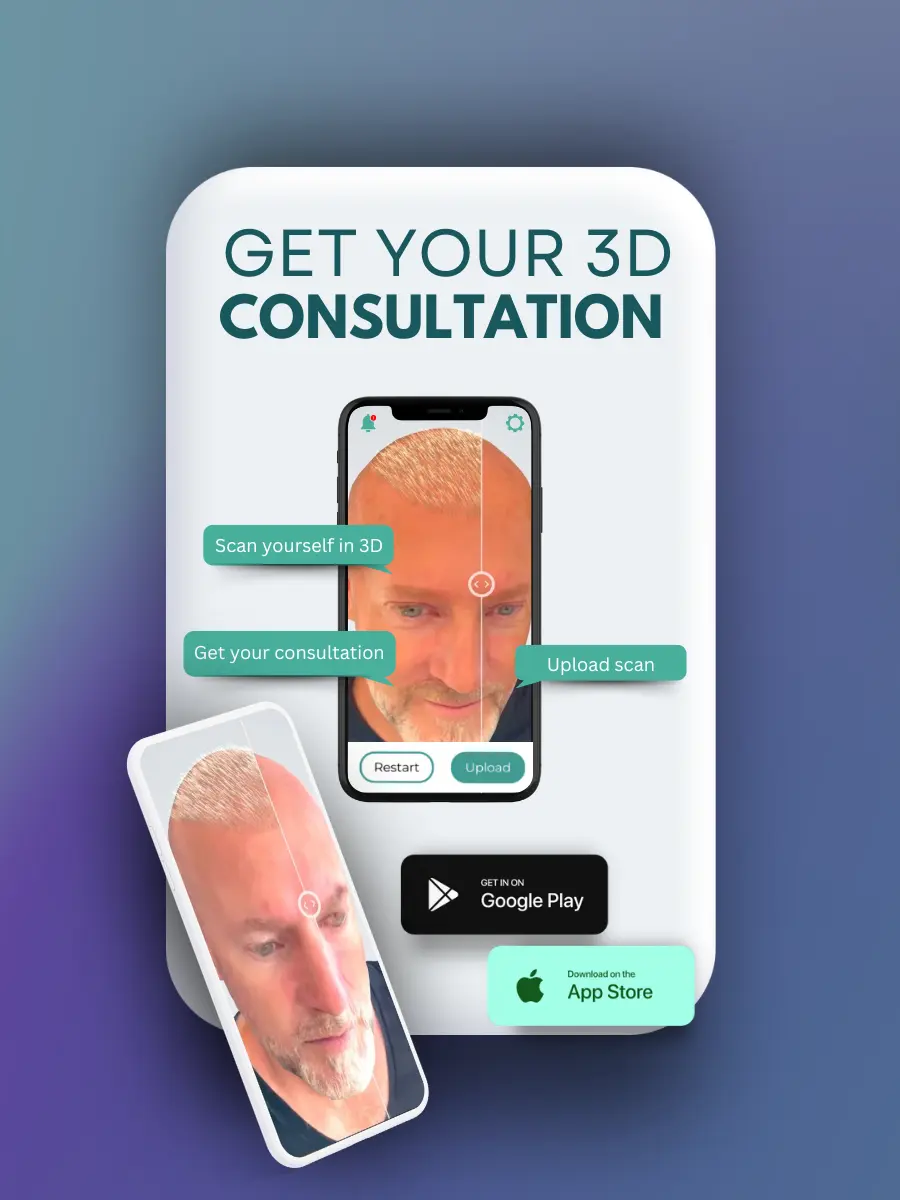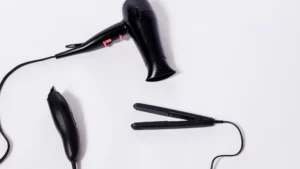Undergoing a hair transplant procedure can be an exciting and transformative experience, offering the promise of a fuller, more vibrant head of hair. However, along with the anticipation of newfound confidence comes the reality of post-operative care, including the management of swelling.
I am Emma Wright, your go-to hair transplant specialist and restoration guide. Today, we’ll be looking at how to reduce swelling after a hair transplant.
Swelling is a common occurrence after a hair transplant, but with the right techniques and precautions, it can be effectively minimized to ensure a smoother and more comfortable recovery process.
In this blog post, we’ll explore various practical strategies and expert tips for reducing swelling after a hair transplant naturally. From cold compresses to gentle scalp massage techniques, we’ll delve into actionable steps to help alleviate discomfort and promote optimal healing.
Whether you’re considering a hair transplant or have recently undergone the procedure, this guide aims to provide valuable insights to support your journey toward achieving the desired results with minimal post-operative swelling.
Let’s dive in and discover how you can navigate this crucial aspect of the hair transplant recovery process with confidence and ease.
What Causes Swelling After Hair Transplant?
Swelling after a hair transplant is a natural response of the body to the surgical procedure and can be caused by several factors. Understanding the underlying causes of swelling can help individuals better manage and minimize its effects.
Here are some common reasons why swelling occurs after a hair transplant:
- Trauma to the Scalp: During the hair transplant procedure, tiny incisions or recipient sites are made in the scalp to implant the hair grafts. This trauma to the scalp tissues can lead to inflammation and swelling as part of the body’s natural healing response.
- Fluid Accumulation: Following the surgery, fluid may accumulate in the tissues surrounding the implanted grafts due to the disruption of blood vessels and lymphatic channels. This fluid buildup contributes to swelling in the scalp and forehead areas.
- Inflammatory Response: The body’s immune system reacts to the surgical trauma by releasing inflammatory substances, such as histamines and cytokines, to promote healing. While inflammation is a necessary part of the healing process, it can also result in swelling and discomfort in the treated areas.
- Blood Flow Changes: The hair transplant procedure can temporarily alter blood flow to the scalp, leading to increased circulation and dilation of blood vessels. This enhanced blood flow contributes to swelling as fluid and nutrients are transported to the healing tissues.
- Sensitivity to Anesthesia: Some individuals may experience mild swelling as a side effect of local anesthesia administered during the procedure. This localized swelling typically resolves within a few hours or days following the surgery.
- Patient-Specific Factors: Certain individual factors, such as skin type, age, overall health, and genetic predisposition, can influence the extent of swelling experienced after a hair transplant. Patients with a history of allergies or hypersensitivity reactions may be more prone to swelling.
- Postoperative Care Practices: Factors related to postoperative care, such as the use of cold compresses, head positioning, and adherence to activity restrictions, can impact the severity and duration of swelling after a hair transplant.
How Long Till Swelling Goes Down After Hair Transplant?
The duration of swelling after a hair transplant can vary from person to person, depending on several factors such as individual healing capacity, the extent of the procedure, and adherence to postoperative care instructions.
In general, swelling typically peaks within the first 2 to 3 days following the surgery and gradually subsides over the course of the first week. However, it’s not uncommon for residual swelling to persist for up to 2 weeks or more in some cases.
The initial swelling may be more pronounced around the forehead, temples, and eyes, especially if the procedure involves these areas. As the body begins to heal and the inflammatory response subsides, the swelling gradually decreases, and the treated areas return to their normal appearance.
To expedite the resolution of swelling and promote optimal healing, individuals undergoing a hair transplant should follow their surgeon’s postoperative care instructions diligently. This may include measures such as applying cold compresses, keeping the head elevated, avoiding strenuous activities, and taking prescribed medications as directed.
Additionally, maintaining proper hydration, eating a healthy diet, and getting adequate rest can support the body’s healing process and help reduce swelling more effectively.
It’s important to note that while swelling is a common and expected side effect of a hair transplant, individuals should monitor their recovery closely and notify their surgeon if they experience excessive or prolonged swelling, as this may indicate a potential complication requiring medical attention.
Overall, with proper care and patience, swelling after a hair transplant typically resolves within a few days to a week, allowing individuals to enjoy the results of their procedure with minimal discomfort.
Face Swelling After Hair Transplant
Experiencing facial swelling after a hair transplant is not uncommon, particularly if the procedure involved the frontal hairline or temple areas. Here’s why facial swelling can occur after a hair transplant and what you can do to manage it:
- Surgical Trauma: The hair transplant procedure involves making tiny incisions or recipient sites in the scalp, which can lead to localized trauma and inflammation. Since the scalp is closely connected to the face, particularly around the forehead and temple regions, swelling can extend to the facial tissues as well.
- Fluid Accumulation: Following the surgery, fluid may accumulate not only in the scalp but also in the surrounding facial tissues due to the disruption of blood vessels and lymphatic channels. This fluid buildup contributes to facial swelling, particularly around the eyes and cheeks.
- Inflammatory Response: The body’s immune system responds to the surgical trauma by releasing inflammatory substances to promote healing. This inflammatory response can cause swelling not only in the scalp but also in the adjacent facial areas.
- Gravity and Positioning: Gravity can play a role in the distribution of swelling, particularly if the individual lies in a reclined position during the recovery period. Swelling may gravitate downward toward the face, leading to puffiness around the eyes and cheeks.
- Postoperative Care: Proper postoperative care practices, such as applying cold compresses, keeping the head elevated, and avoiding strenuous activities, can help minimize facial swelling after a hair transplant. Following your surgeon’s recommendations for postoperative care is essential for managing swelling effectively.
While facial swelling after a hair transplant is typically temporary and resolves within a few days to a week, there are steps you can take to alleviate discomfort and expedite the healing process:
- Apply Cold Compresses: Use cold compresses or ice packs wrapped in a cloth to reduce swelling and soothe the affected areas. Apply them gently to the swollen areas for short intervals several times a day during the initial postoperative period.
- Keep Your Head Elevated: Maintain a semi-upright position while resting or sleeping to facilitate drainage of fluids from the scalp and facial tissues. Use extra pillows to elevate your head and upper body, especially during the first few days after the procedure.
- Stay Hydrated and Rest: Drink plenty of water to stay hydrated and support the body’s healing process. Additionally, get adequate rest and avoid strenuous activities that could exacerbate swelling.
- Follow Postoperative Care Instructions: Adhere to your surgeon’s postoperative care instructions, including any prescribed medications or topical treatments. Avoid touching or rubbing the treated areas, and be gentle when washing or caring for your hair and scalp.
If you experience excessive or prolonged facial swelling, or if you have any concerns about your recovery, don’t hesitate to contact your surgeon for guidance and reassurance. They can evaluate your condition and provide personalized recommendations to help you manage swelling and ensure a smooth recovery after your hair transplant.

10 Tips To Reduce Swelling After Hair Transplant
Reducing swelling after a hair transplant is essential for a comfortable and smooth recovery. Here are ten effective tips to help minimize swelling:
- Apply Cold Compresses: Use cold compresses or ice packs wrapped in a cloth to reduce swelling and inflammation. Apply them gently to the swollen areas for 10-15 minutes several times a day during the first few days after the procedure.
- Keep Your Head Elevated: Maintain a semi-upright position while resting or sleeping to facilitate drainage of fluids from the scalp. Use extra pillows to elevate your head and upper body, especially during the initial recovery period.
- Stay Hydrated: Drink plenty of water to stay hydrated and support the body’s natural healing process. Proper hydration can help reduce inflammation and promote tissue repair.
- Avoid Alcohol and Caffeine: Limit your consumption of alcohol and caffeinated beverages, as they can contribute to dehydration and exacerbate swelling. Opt for water and herbal teas instead.
- Follow Postoperative Care Instructions: Adhere to your surgeon’s postoperative care instructions diligently. This may include taking prescribed medications, using recommended topical treatments, and avoiding activities that could increase swelling.
- Avoid Heat Exposure: Refrain from exposing the treated areas to direct sunlight, hot showers, saunas, or steam rooms during the initial recovery period. Heat can dilate blood vessels and worsen swelling.
- Gentle Scalp Massage: After the first few days following the procedure, gently massage the scalp using your fingertips to promote blood circulation and facilitate drainage of excess fluids. Be careful not to apply too much pressure to the graft sites.
- Eat a Healthy Diet: Consume a balanced diet rich in fruits, vegetables, lean proteins, and whole grains. Nutrient-rich foods can support the body’s healing process and help reduce swelling.
- Avoid Strenuous Activities: Refrain from engaging in strenuous activities, heavy lifting, or vigorous exercise during the initial recovery period. Exertion can increase blood flow to the scalp and exacerbate swelling.
- Patience and Rest: Give your body ample time to heal and recover. Avoid unnecessary stress and get plenty of rest to promote optimal healing and minimize swelling.
Medicine To Reduce Swelling After Hair Transplant
After a hair transplant procedure, your surgeon may prescribe or recommend medications to help reduce swelling and promote a smoother recovery.
Here are some common medications used to manage swelling after a hair transplant:
- Non-Steroidal Anti-Inflammatory Drugs (NSAIDs): NSAIDs such as ibuprofen (Advil, Motrin) or naproxen (Aleve) can help reduce inflammation and alleviate discomfort associated with swelling. These medications are often used during the immediate postoperative period to manage pain and swelling.
- Corticosteroids: Corticosteroids may be prescribed in the form of oral tablets or topical creams to help reduce inflammation and swelling. These medications work by suppressing the immune response and reducing the production of inflammatory substances in the body.
- Antihistamines: Antihistamines such as diphenhydramine (Benadryl) may be used to help alleviate itching, redness, and swelling caused by allergic reactions or sensitivity to anesthesia or medications.
- Prescription Pain Medications: In some cases, your surgeon may prescribe stronger pain medications, such as opioids, to help manage discomfort and swelling during the initial recovery period. These medications are typically used for short-term pain relief and should be taken as directed.
- Steroid Injections: In certain situations where swelling is particularly pronounced or persistent, your surgeon may administer steroid injections directly into the affected areas to reduce inflammation and promote faster resolution of swelling.
- Topical Treatments: Your surgeon may recommend topical treatments, such as corticosteroid creams or gels, to apply to the swollen areas to help reduce inflammation and discomfort.
It’s important to follow your surgeon’s recommendations and instructions regarding medication usage closely. Be sure to take medications as prescribed, adhere to recommended dosages, and inform your surgeon of any allergies or adverse reactions to medications you may have experienced in the past.
In addition to medications, other measures such as applying cold compresses, keeping the head elevated, staying hydrated, and following postoperative care instructions can also help reduce swelling and promote a smoother recovery after a hair transplant.
If you have any concerns or questions about managing swelling or your recovery process, don’t hesitate to consult with your surgeon for personalized advice and guidance.
Conclusion
In conclusion, managing swelling after a hair transplant is an essential aspect of the recovery process to ensure a comfortable and successful outcome. By following your surgeon’s recommendations and utilizing appropriate medications and treatments, you can effectively reduce swelling and promote optimal healing.
Remember to take prescribed medications as directed, adhere to recommended postoperative care instructions, and communicate any concerns or adverse reactions with your surgeon.
Additionally, incorporating lifestyle adjustments such as applying cold compresses, keeping the head elevated, and staying hydrated can further support the reduction of swelling and enhance your overall recovery experience.
While some degree of swelling is normal after a hair transplant, it typically subsides gradually over the first week or two following the procedure. By being patient, proactive, and attentive to your body’s needs, you can navigate the recovery process with confidence and achieve the desired results of your hair transplant.
If you have any questions or require further assistance during your recovery journey, don’t hesitate to reach out to your surgeon for guidance and support. Your surgeon is there to help you every step of the way and ensure that you have a smooth and successful recovery after your hair transplant.














